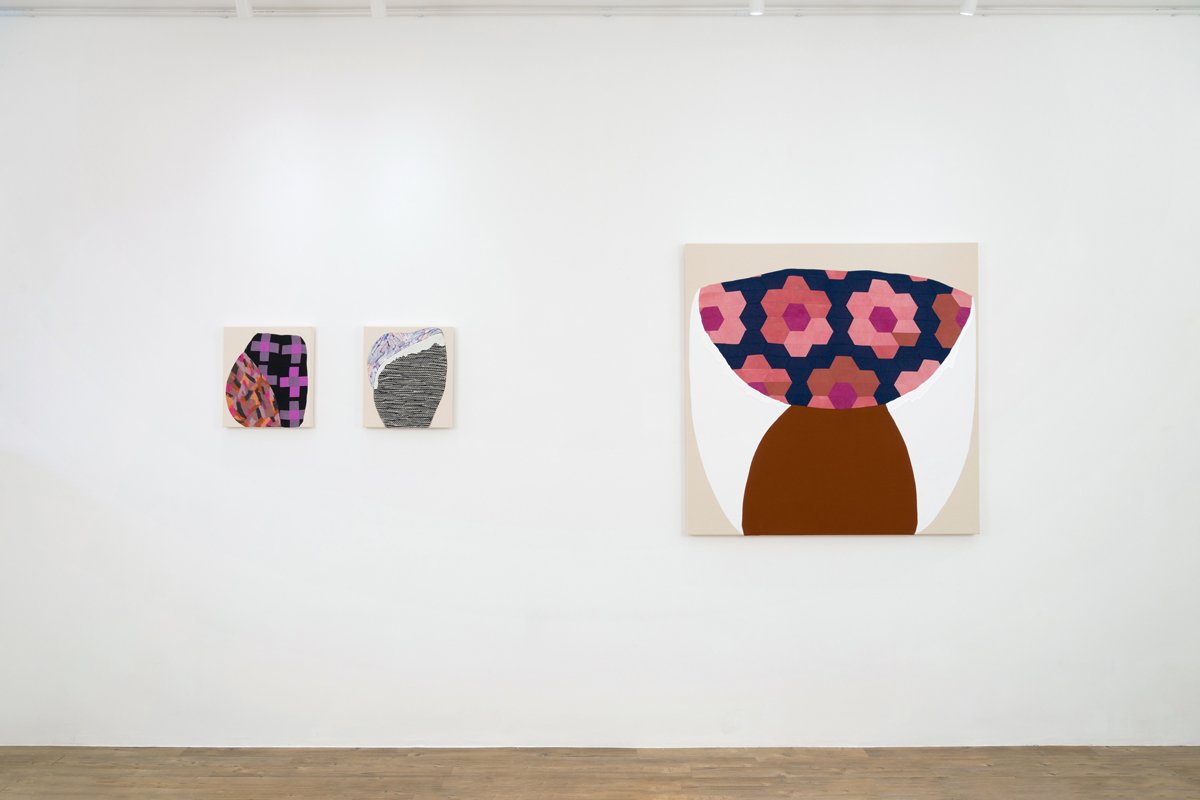here nor there at Denny Dimin, Hong Kong





Press Release
Denny Dimin Gallery is pleased to announce here nor there, a solo exhibition of new work by Amanda Valdez which will be her first with Denny Dimin Gallery in its Hong Kong location. The exhibition will be on view at our space in Wong Chuk Hang from November 12 to December 23, 2022 following major international exhibitions and her recent acquisitions by the Heckscher Museum of Art and the United States Art in Embassies program.
Amanda Valdez is known for her bold abstract paintings which incorporate quilting, sewing, dyeing, weaving and painting. Her process begins with small scale drawings, which she refers to as “somatic release” in the sense of them being akin to an intuitive physical response to an emotion, experience or idea. “It evokes the moment of pencil on paper, of hands moving and responding to both materials…[and] the release of this primal information.” She visually quantifies this primal information pertaining to the body with its functions and dysfunctions and cycles of physical and mental change, and more recently motherhood, via unique shapes which are dislodged through this process. From these drawings, she sets about constructing the paintings. Her practice involves both hand dyed and commercially sourced fabrics or handwoven textiles which Valdez looks to incorporate as shaped panels, sewing them into the canvas before stretching this singular piece over the frame. Each work demands a different approach with the final painting realized through a combination of oil stick, gouache, acrylic, embroidery and weaving.
Valdez’s most recent work speaks to the duality of her practice where the narrative of the work is both literally shaped by the gendered histories behind materiality and abstraction alongside a more subjective experience which moves like a conversation and sharing between artist and viewer. With regard to the former, Valdez’s works acknowledge the geometric patterning often referenced in the Minimalist and Conceptual
art movements breaking forth during the 1960s and 70s, along side the long precedent of the use of the grid in quilt making and weaving. The uniformity and control of grids found in this work are acknowledged by Valdez in the inclusion of weaving in her latest body of work. Grids formed by the warp and weft (the horizontal and vertical movements of the loom) dictate both line and methodology of practice in this artform which then moves further to influence shapes and patterns in the wider form of the work. We then see the second narrative of subjectivity, personal experience and visceral outreach to the viewer come into play with the highly tactile use of painterly materials such as the seemingly viscid acrylic drip forms, smooth velvety gouache and textured layered oil stick. We see nods to Abstract Expressionism in the apparent fluid freeform application yet there is a considered and controlled methodology which speaks to Valdez’s experience and technical prowess. Valdez’s work also references the cultural resilience and significance of women’s craft traditions. These traditions, which Valdez has championed and explored throughout her career are seeing a resurgence in contemporary art.
The more personal attributes associated with the work and which speak to shared human experiences, find form in the anamorphic shapes and their positioning, often referencing the corporeal experience. There is also the fundamental and intentional inclusion of the mistake or the mismatch, which both conceptually speak to these human experiences but also seek to formally reposition the work, requiring the viewer to pause, and reconsider the artwork. This confluence of shapes, textures, materiality and color mirrors the amalgamation of identity, shared experiences and histories. These are simultaneously all laid out on the canvas whilst also holding enough mystique to allow the viewer to form their own relationship with the work. The artwork, while born from a personal release of the artist, finds new life through its own subjectivity encountering the viewer. It is neither “here nor there.”